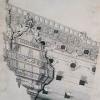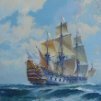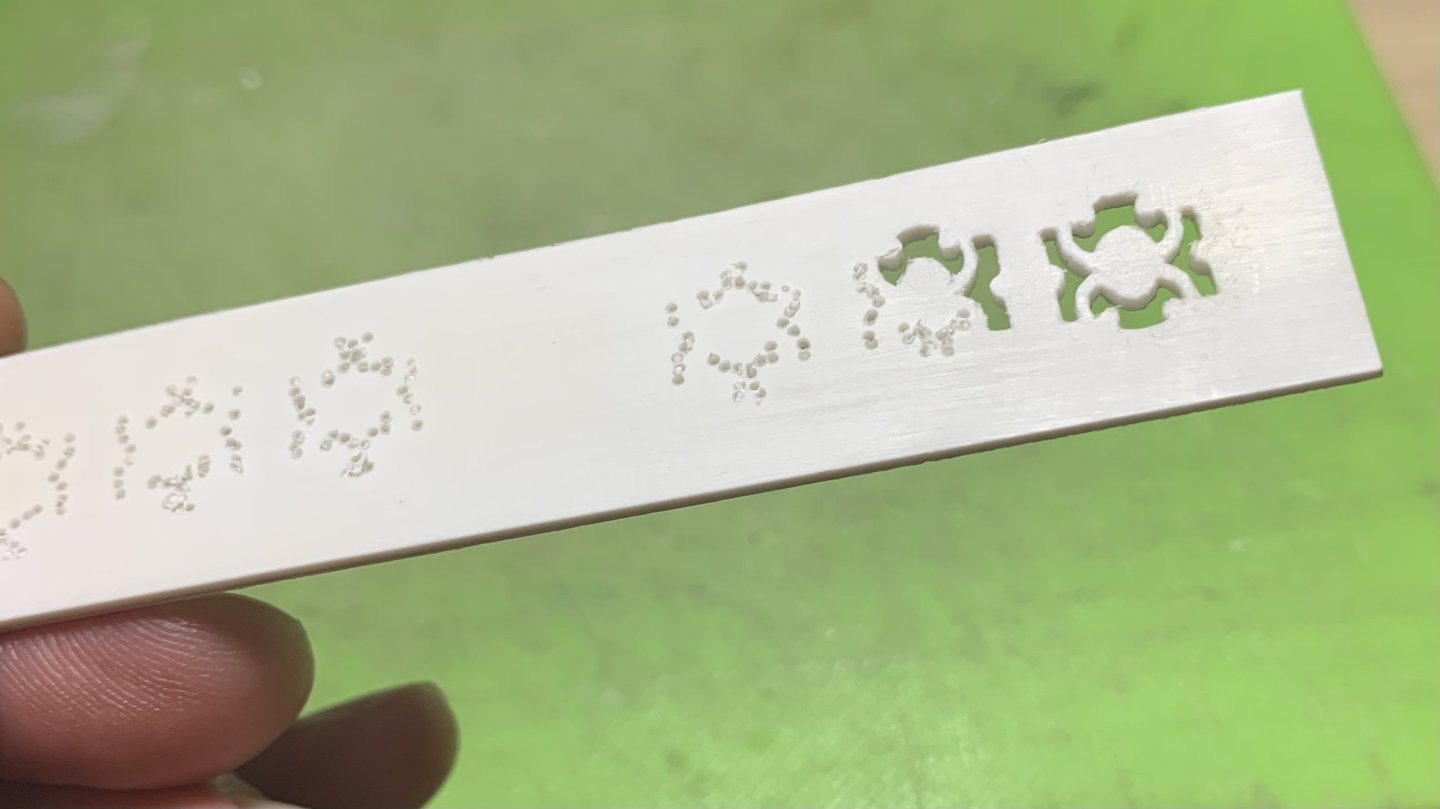-
Posts
3,295 -
Joined
-
Last visited
About Hubac's Historian

- Birthday 08/11/1973
Profile Information
-
Gender
Male
-
Location
New York City
-
Interests
17th Century Naval Architecture, furniture design and construction with an emphasis on the Art Nouveau period, 20th Century architecture, wood carving, muscle cars, the Knicks, and early American longrifles.
Contact Methods
-
Yahoo
Benchmarc_woodworking@yahoo.com
Recent Profile Visitors
-
 Hubac's Historian reacted to a post in a topic:
HMS ANSON 1781 by albert - 1/48 - 64 guns
Hubac's Historian reacted to a post in a topic:
HMS ANSON 1781 by albert - 1/48 - 64 guns
-
 Hubac's Historian reacted to a post in a topic:
HMS ANSON 1781 by albert - 1/48 - 64 guns
Hubac's Historian reacted to a post in a topic:
HMS ANSON 1781 by albert - 1/48 - 64 guns
-
 Hubac's Historian reacted to a post in a topic:
HMS ANSON 1781 by albert - 1/48 - 64 guns
Hubac's Historian reacted to a post in a topic:
HMS ANSON 1781 by albert - 1/48 - 64 guns
-
 Hubac's Historian reacted to a post in a topic:
HMS ANSON 1781 by albert - 1/48 - 64 guns
Hubac's Historian reacted to a post in a topic:
HMS ANSON 1781 by albert - 1/48 - 64 guns
-
 Hubac's Historian reacted to a post in a topic:
HMS ANSON 1781 by albert - 1/48 - 64 guns
Hubac's Historian reacted to a post in a topic:
HMS ANSON 1781 by albert - 1/48 - 64 guns
-
 Mark P reacted to a post in a topic:
HMS ANSON 1781 by albert - 1/48 - 64 guns
Mark P reacted to a post in a topic:
HMS ANSON 1781 by albert - 1/48 - 64 guns
-
 Hubac's Historian reacted to a post in a topic:
Soleil Royal by EricWiberg - Heller - 1/100 - PLASTIC - started 45 years ago
Hubac's Historian reacted to a post in a topic:
Soleil Royal by EricWiberg - Heller - 1/100 - PLASTIC - started 45 years ago
-
 EricWiberg reacted to a post in a topic:
Soleil Royal by EricWiberg - Heller - 1/100 - PLASTIC - started 45 years ago
EricWiberg reacted to a post in a topic:
Soleil Royal by EricWiberg - Heller - 1/100 - PLASTIC - started 45 years ago
-
 EricWiberg reacted to a post in a topic:
Soleil Royal by EricWiberg - Heller - 1/100 - PLASTIC - started 45 years ago
EricWiberg reacted to a post in a topic:
Soleil Royal by EricWiberg - Heller - 1/100 - PLASTIC - started 45 years ago
-
Heller’s SR looks amazing in sheer, but you just can’t focus too much on her underwater shapes. When you minimize the visibility of the lower hull, you vastly improve the credibility of the kit as a scale model.
- 396 replies
-
- soleil royal
- Heller
-
(and 1 more)
Tagged with:
-
The other issue with a lower hull build-out is that the entire midship to bow, along the maximum breadth is just all wrong.
- 396 replies
-
- soleil royal
- Heller
-
(and 1 more)
Tagged with:
-
Personally, Eric, I would not even consider building out, or expanding the lower hull. It could be done, but you would need to figure out the rising line of the floors and make pattern guides that faired into the maximum breadth line. The number of difficulties in doing this without CAD are numerous, and getting one small thing wrong, or working from an erroneous assumption could compromise the whole project. Not worth it, IMO. Conversely, it is not too difficult to place the un-cut hull into a waterline sea. As for the QG entry doors, there would definitely have been an actual door there, opening inboard. Seaways can get awful rough, and a ship’s capacity to pump out water would be quickly overwhelmed, if she were taking water in through these large openings.
- 396 replies
-
- soleil royal
- Heller
-
(and 1 more)
Tagged with:
-
 Hubac's Historian reacted to a post in a topic:
Soleil Royal by EricWiberg - Heller - 1/100 - PLASTIC - started 45 years ago
Hubac's Historian reacted to a post in a topic:
Soleil Royal by EricWiberg - Heller - 1/100 - PLASTIC - started 45 years ago
-
 Hubac's Historian reacted to a post in a topic:
Soleil Royal by EricWiberg - Heller - 1/100 - PLASTIC - started 45 years ago
Hubac's Historian reacted to a post in a topic:
Soleil Royal by EricWiberg - Heller - 1/100 - PLASTIC - started 45 years ago
-
 Hubac's Historian reacted to a post in a topic:
L'Ambitieux by Nek0 - Altaya
Hubac's Historian reacted to a post in a topic:
L'Ambitieux by Nek0 - Altaya
-
 Nek0 reacted to a post in a topic:
L'Ambitieux by Nek0 - Altaya
Nek0 reacted to a post in a topic:
L'Ambitieux by Nek0 - Altaya
-
 Nek0 reacted to a post in a topic:
Soleil Royal by Hubac's Historian - Heller - An Extensive Modification and Partial Scratch-Build
Nek0 reacted to a post in a topic:
Soleil Royal by Hubac's Historian - Heller - An Extensive Modification and Partial Scratch-Build
-
 Nek0 reacted to a post in a topic:
Soleil Royal by Hubac's Historian - Heller - An Extensive Modification and Partial Scratch-Build
Nek0 reacted to a post in a topic:
Soleil Royal by Hubac's Historian - Heller - An Extensive Modification and Partial Scratch-Build
-
 Hubac's Historian reacted to a post in a topic:
Sovereign of the Seas by 72Nova - Airfix - PLASTIC
Hubac's Historian reacted to a post in a topic:
Sovereign of the Seas by 72Nova - Airfix - PLASTIC
-
Gary, this all just looks incredible. Really nice progress, and great to see you active again! Best, Marc
-
 bdgiantman2 reacted to a post in a topic:
Sloop Speedwell 1752 by Chuck - Ketch Rigged Sloop - POF - prototype build
bdgiantman2 reacted to a post in a topic:
Sloop Speedwell 1752 by Chuck - Ketch Rigged Sloop - POF - prototype build
-
 EJ_L reacted to a post in a topic:
Soleil Royal by Hubac's Historian - Heller - An Extensive Modification and Partial Scratch-Build
EJ_L reacted to a post in a topic:
Soleil Royal by Hubac's Historian - Heller - An Extensive Modification and Partial Scratch-Build
-
 EJ_L reacted to a post in a topic:
Soleil Royal by Hubac's Historian - Heller - An Extensive Modification and Partial Scratch-Build
EJ_L reacted to a post in a topic:
Soleil Royal by Hubac's Historian - Heller - An Extensive Modification and Partial Scratch-Build
-
 EJ_L reacted to a post in a topic:
Soleil Royal by Hubac's Historian - Heller - An Extensive Modification and Partial Scratch-Build
EJ_L reacted to a post in a topic:
Soleil Royal by Hubac's Historian - Heller - An Extensive Modification and Partial Scratch-Build
-
And, among the wooden SR kits, the Sergal version does offer some of the best potential for correcting the kit lines, as someone on the web has done here:
- 2,696 replies
-
- heller
- soleil royal
-
(and 9 more)
Tagged with:
-
Thank you so much, GP Phil! Aleksandr, that’s a solid idea on templating.
- 2,696 replies
-
- heller
- soleil royal
-
(and 9 more)
Tagged with:
-
Perseverance. Camaraderie. These are the ties that bind us to each other, and to our projects in-hand. As always, many thanks to all who continue to persevere here. Small update. They’re all small these days, but chipping away. I will say that it is always remarkable to me that no matter how scrupulously I draw something, and use straight edges to scribe the lines into plastic, while also accounting for the half-width of the blade-to-point (and the half-width of the drawn line) - there are always WILD discrepancies from the drawings, in the cut parts. It is essential, IMO, to make the actual parts fit the initial drawing, because the pattern/drawing is based directly on the actual deck camber; minuscule discrepancies in angle-to-post will create gaps between panel and rail that are much more difficult to remedy, given my sub-assembly approach to building these breast rails. Here are my panels laid as carefully over the drawing as I can, after they’ve been parted on the lines with a razor-sharp chisel: One has to account for the shortcomings of phone-photography - which does not provide a truly flattened perspective in close range, however, it is evident in the picture above that there are overlaps, and angle-to-post inconsistencies that would make a final glue-up far less than ideal. My advice to anyone that reads this will be to trust the quality of the initial pattern that you make. Base all of your geometry on that. Shape your parts as closely as you can. You will have FEWER surprises on assembly. Part of what is happening here is that I am paring to a line with a really sharp chisel through soft plastic that is less than 1/16” thick. I am squaring that chisel intuitively by eye. I am careful to always leave less than 1/32” for my final paring cut to the line. And. And, yet. The chisel will still drift to an out-of-square cut. I say all of this to say, that fitting these small panels to a drawing: is a process of consolidation; of checking and re-checking against the drawing; a little from the lower left corner; a little from the top right. Oh, and the central panel does require some actual camber along the top and bottom surfaces. A very little here, and a very little there, and eventually I have arrived at a reasonable bet for sub-assembly: I will note that the central “Soleil Royal” badge is, in actuality, 1/64” off center. I point it out only to highlight that this is what the eye can perceive. In this instance, it is a consequence of process and bonding. I’m using C/A to bond BONDO to plastic. The window for placement is limited. I managed to get the top/bottom spacing right. In the end, after all is said and painted, and posts are in-place - the discrepancy will hardly be noticeable. There is too much else for the eye to focus on for it to matter. Next, I will make the knee/post supports. On what I think is a helpful side-note: I wish good mental health to all. On a personal note, I am finding it harder and harder to remain grounded. Take a breath. Visit a friend, in person. And, take faith that better days will prevail. At some point, they will. These are my steps forward. If any of you feel similarly, please know that you are not alone. Take care of yourselves, MSW/SOS. BTW, I am not on any kind of brink or ledge. I have too much to live for, and plastic Soleil Royal is the least of it😜 I am simply acknowledging that what is happening in the world is really stressful; I think, to the vast majority of people. Things will probably still get worse for a while, but they will eventually get better. I think this way because the MAJORITY of people, and what they need and think still matters. It does, and it always will. I like to think that there is a path forward where the modern “information age” actually limits potential bad outcomes. I’m going to go with that! There is always an open ear, h’ear for anyone “having a moment.” Take care of yourselves, friends.
- 2,696 replies
-
- heller
- soleil royal
-
(and 9 more)
Tagged with:
-
It’s really starting to come together, Eric. Really nice and clean!
- 396 replies
-
- soleil royal
- Heller
-
(and 1 more)
Tagged with:
-
Hi Dan - just checking-in, here. How is your cross-section progressing?
- 22 replies
-
This is just beautiful, clean work, Mark. I love the careful spiling of your planking on the round-tuck stern. This is a very difficult thing to do seamlessly, and you nailed it. I am also interested in the middle strakes of your hull planking, just below the main deck level, which appear to have the chatoyant character of alternating grain. If this was selected deliberately, you chose well. It looks fantastic!
-
100% agreed to all, above. I forgot about patience, but that is a big one!
- 2,696 replies
-
- heller
- soleil royal
-
(and 9 more)
Tagged with:
-
I am in total agreement, David. If it feels too much like work, then you probably won’t get there.
- 2,696 replies
-
- heller
- soleil royal
-
(and 9 more)
Tagged with:
-
A number of you have reached out and said a lot of really complimentary things about the work on these railings, and the model in general. That is very meaningful to me, and I really appreciate it! I do want to take a minute, though, and talk a little bit about process, as there may be people watching along through all of this and thinking “well, I could never do anything quite like THAT.” My resounding reply to anyone who may be feeling that way is that you absolutely can achieve these things. While it is true that I have developed fine motor skills over the course of my lifetime, and they are essential, I think what is often considered “talent” largely boils down to one’s powers of observation. Here is what I mean. Whether it be 17th Century French warships, or 18th Century American longrifles, or Art Nouveau furniture - to name my three most passionate period interests - I think it is essential to constantly be on the search for previously unknown and increasingly better examples of these things, so that you can better appreciate what constitutes Good, Better and Best (Israel Sack’s guide to period furniture) examples of any given type. This is why I love scrolling through Pinterest so much. Every so often, the algorithm sends me a gift of something I had never seen before! More than any other skill that I posses, I believe it is my ability to really home-in on, and scrutinize the details of a thing, that has enabled me to recreate them with reasonable verisimilitude to their times. I really pore over drawings and photographs for excessively long periods of time, and often revisit them until I understand the details well enough to actually draw them. This has always been my litmus test; when I can finally clearly visualize something in my mind’s eye well enough to draw it in a clear and detailed way - then, I absolutely know that I can make that thing. Perfection is never my goal. All aspects of this model, or anything I have made, are slightly irregular. What I am trying to achieve, though, is the uniform application of my powers of observation, in concert with my dexterities to the object in-hand. In other words: I am committed to maintaining a certain standard of execution. The more contemporary models you look at, the more you will come to realize that they all have in-common these slight irregularities of shape and proportion. This is why the project has carried on for as long as it has. Soleil Royal is a magnificently complicated vessel, and I have endeavored to include as much of that detail as I reasonably can. The QD breast rail is emblematic of this process. When you really study it, you can find all manner of a-symmetries: However, as with painting, it is my habit to work an individual panel, for example; get it fretted pretty close to where I want it to end up; regularly flip the work from front to back to make sure I’m not cutting out of square; and, finally, to come back and re-work each panel so that they are as consistent as I can make them. The secret to all of this is just time. I enjoy the process, so the enormous amounts of time I spend whittling away don’t really matter too much. In closing, all of these things you see me doing were learned right here in the process of making THIS very model. My skills have improved tremendously over that span of time. These things are achievable. You can do them too, and the process of learning to opens doors to what you are capable of within the hobby. You are suddenly no longer constrained by whatever kit manufacturers deem profitable enough for manufacture. Thank you for indulging my reverie. All the best, Marc
- 2,696 replies
-
- heller
- soleil royal
-
(and 9 more)
Tagged with:
About us
Modelshipworld - Advancing Ship Modeling through Research
SSL Secured
Your security is important for us so this Website is SSL-Secured
NRG Mailing Address
Nautical Research Guild
237 South Lincoln Street
Westmont IL, 60559-1917
Model Ship World ® and the MSW logo are Registered Trademarks, and belong to the Nautical Research Guild (United States Patent and Trademark Office: No. 6,929,264 & No. 6,929,274, registered Dec. 20, 2022)
Helpful Links
About the NRG
If you enjoy building ship models that are historically accurate as well as beautiful, then The Nautical Research Guild (NRG) is just right for you.
The Guild is a non-profit educational organization whose mission is to “Advance Ship Modeling Through Research”. We provide support to our members in their efforts to raise the quality of their model ships.
The Nautical Research Guild has published our world-renowned quarterly magazine, The Nautical Research Journal, since 1955. The pages of the Journal are full of articles by accomplished ship modelers who show you how they create those exquisite details on their models, and by maritime historians who show you the correct details to build. The Journal is available in both print and digital editions. Go to the NRG web site (www.thenrg.org) to download a complimentary digital copy of the Journal. The NRG also publishes plan sets, books and compilations of back issues of the Journal and the former Ships in Scale and Model Ship Builder magazines.






.thumb.jpeg.fc5d633a7b34428fcf19419a73d56d55.jpeg)













